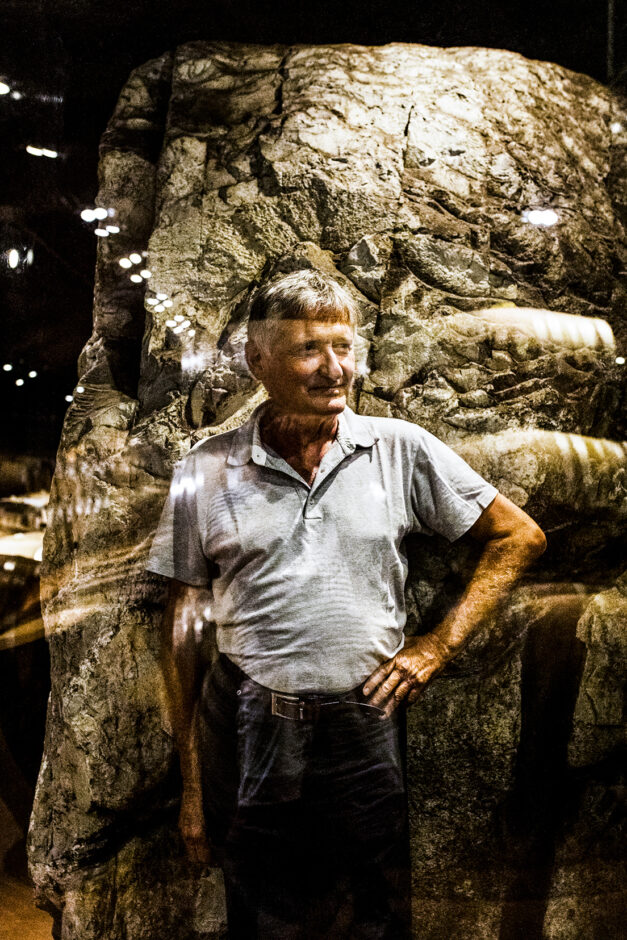12th Jan 2023
"I had a vision, I knew where I wanted to go and passion and vision are the powers that move the world."
- Paolo De Marchi

Power Vision
“Every day I feel like crying,” Paolo De Marchi replied when I told him I had to come one more time “to see you again before you left” when I visited his Isole e Olena estate in the Chianti Classico hills in September 2022. Just before, in June, De Marchi had sold the estate to the French luxury group EPI, whose portfolio includes Champagne houses Rare and Charles Heidsieck as well as Biondi Santi in Montalcino. Having spent the last 47 years of his life turning the Isole e Olena estate into the world-famous name it is now, is it any wonder he felt emotional about saying goodbye?
"Every day I feel like crying."
The De Marchi family were originally from the north of Piedmont, between Val D’Aosta and the Italian side of Switzerland, where they had very small vineyards which were abandoned after World War Two. The Isole e Olena estate was bought by Paolo’s father in 1956. It consisted of two abandoned hamlets, Isole and Olena, and the surrounding vineyards. De Marchi was born in Turin and studied agricultural sciences, viticulture, and winemaking at the university there, and as soon as he graduated and finished his training, he moved to the estate in Tuscany, and he has been responsible for Isole e Olena ever since 1976.
De Marchi recalls, “These last 47 years have been an unbelievable experience and extremely worthwhile for me even though, especially in the early days, I found it so, so difficult. But I must say that my whole history and experience here have been mostly dictated by passion and by vision without the pressure of success and money. Success came, and a sound financial situation came as a consequence…of the passion and the vision.”
I asked De Marchi how he was able to turn things around and create such a successful estate and so many great wines. His story is uplifting and inspiring to anyone who ever had a dream.
He arrived in Tuscany in the mid-1970s, which he describes as “one of the most difficult periods.” 1976 was his first harvest. The Chianti appellation required “a huge number” of white grapes in the blend. This was really a relic from the old sharecropper system that had been abandoned only ten years before in the mid-1960s. De Marchi explained: “At that time, the sharecroppers needed Chianti Classico wines to be light and to be acidic because they used to dilute them with water when working the fields, and they needed the wine to be ready for drinking right after the harvest.” Consequently, “we all planted the vineyards with a lot of white grapes. From the second vintage, I started to reduce the amount of white grapes.” Instead, he sold the wine that he was making from Trebbiano and Malvasia to a distillery, “and the red wine immediately started to be better.”



Although the appellation rules changed in 1984, greatly reducing the requirement for white grapes in the Chianti blend, De Marchi says, “It was actually a very small group of producers who started to do things differently, well before the rules had been changed. By removing the white grapes, the wines immediately stood out from the crowd.” By his second harvest, he had started to walk along every single row of the vineyards tagging the Sangiovese vines, which he “thought looked good or the taste was good, and the grapes and the vines were not over-cropped, and the berries were not too big, and the clusters were not too compact.” This is known as “massal selection” and, explains De Marchi “it is not really from genetic material” but based upon how the grapes perform in the vineyard. He started making a 100% Sangiovese wine from these better-quality vines just to see what it would be like, and this was originally blended into his reserve wines.
"It was actually a very small group of producers who started to do things differently well before the rules had been changed."
In 1980, De Marchi took the decision to bottle this wine under the name Cepparello, “the name of the little creek which runs dry most of the season through the estate,” he explains. The source of this creek is in the forest above the winery. Pure Sangiovese wines could not legally be called Chianti Classico at that time, so it was released as a Vino Da Tavola. “This wine is now the flagship wine of the estate,” Di Marchi reflects. “It is known worldwide, and it is the wine that has helped this estate to become what it is now.”


After ten years of working with these tagging devices, De Marchi said he had many vines with just one or two tags, which performed better in some vintages, but he also had some vines with 5, 6, or 7 tags over a period of 10 years. He assumed these vines had good genetics and were able to withstand vintage variation. In 1987, he finally planted a vineyard where he grafted all the vines that had the most tags. The idea was to concentrate in one vineyard, vines of the same age with the same rootstocks, grown on the same site at the same elevation and on the same soil. “Therefore, the differences between these vines would probably be genetic. This has been a huge work that is still ongoing because we must keep selecting. The history of human agriculture is actually a history of genetic selection,” comments De Marchi. “In the end, I came out with a number of vine selections that were registered by a nursery. These days many, many new vineyards in the Chianti Classico DOCG are planted with vine selections that I made here at Isole e Olena.”
"Curiosity is the most important thing."
Before planting his vineyard in 1987, he did an in-depth survey of the soils of the estate, just out of curiosity. “Curiosity is the most important thing,” exclaims De Marchi. “When you work with practical things, you work with observation; you work with nature. We cannot change nature. We have to understand nature and decide how to act. I started to work with an excavator and to dig holes all over the estate, and I came out with what, to my knowledge, is probably one of the very first soil maps of a Chianti Classico estate. Later on, this process was called zoning. It was extremely important to understand the soil and to understand the relationship between the genetics of the vine and the soil.”


In almost half a century De Marchi has painstakingly accrued a deep understanding of his vineyards, exploring man’s ability to work with vines, grapes, soil, and climate to allow the natural terroir to express itself. Tasting through a vertical of recent vintages of Cepparello, I was struck by the gentleness, harmony, and supreme balance of these wines, and the latest release, the 2019, seems to be the apogee of this wonderful quest. De Marchi told me, “I had a vision, I knew where I wanted to go and passion and vision are the powers that move the world.” I so hope they continue to remain so.

–
Article & Reviews by Susan Hulme MW
Photos by Svante Örnberg
See more work from Svante at svanteornberg.se by clicking here!

PRODUCERS IN THIS ARTICLE
> Show all wines sorted by scoreMore articles
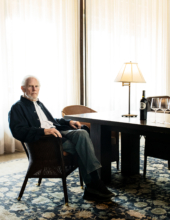
Harlan Estate, BOND, Promontory 2021 and 2011
11th Apr 2024
14 tasting notes
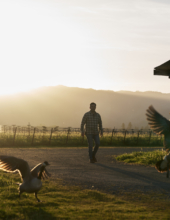
Favia 2012-2021
04th Apr 2024
17 tasting notes
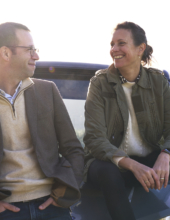
Eisele Vineyard 1971-2021
28th Mar 2024
9 tasting notes
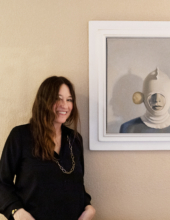
Kimberly Jones Selections 2024 Releases
28th Mar 2024
216 tasting notes
Show all articles
